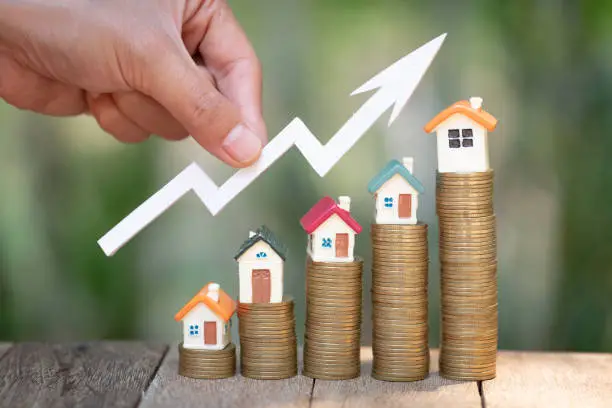12 Fundamentals That Affect Home Value
1. Location, Location, Location

A house itself doesn’t typically increase in value. In reality, the physical attributes of a house often degrade over time. What truly appreciates is the land upon which the house is built. This emphasizes the importance of location. Various factors influence whether a location enhances or diminishes property market value. More buyers are now considering these factors.
Enhancements in Community Infrastructure
Traditionally, homes situated in urban settings near workplaces, dining establishments, shopping centers, and recreational facilities maintain a strong market value. Upgrades in community and local amenities, such as the establishment of eateries, parks, or public transportation, can lift property values.
The integration of nature pathways and parks into community development plays a pivotal role in amplifying property values, and here’s a deeper look into why and how:
Physical Health
Nature pathways and parks encourage outdoor activities like walking, jogging, and cycling. Regular access to such spaces is associated with better cardiovascular health, lower obesity rates, and overall improved physical well-being.
Mental Well-being
Natural surroundings have a calming effect on the human psyche. They provide a place for meditation, relaxation, and an escape from urban stressors, contributing to decreased anxiety levels and overall mental health enhancement.
Social Cohesion
Parks and nature pathways become communal gathering spots where neighbors interact, fostering a sense of community and building stronger social ties. They often host community events, workshops, or fitness classes that bring residents together, promoting cultural exchange and networking.
Environmental Benefits
Such spaces act as urban areas’ lungs, helping air purification by absorbing pollutants. They support local biodiversity, offering habitats to various flora and fauna, enhancing the ecological balance.
Aesthetic Appeal
Natural spaces enhance the scenic beauty of a neighborhood, making it more attractive to potential homebuyers and renters. Well-maintained parks can serve as landmarks or points of pride for communities, bolstering the area’s reputation.
Economic Advantages
As these green spaces make neighborhoods more desirable, businesses such as cafes, bookstores, and other recreational hubs are more likely to be established nearby, creating an upsurge in local economic activity. Property developers and realtors often highlight proximity to parks and natural pathways as selling points, knowing they can command higher prices for such properties.
Safety and Noise Reduction
Green spaces can act as buffer zones, reducing noise pollution from busier urban areas or traffic thoroughfares. A well-designed park with adequate lighting and visibility can also deter criminal activities, enhancing the safety of a neighborhood and adding to market value.
Low Crime Rates
Moreover, homes in areas with lower crime rates generally command higher values. As the crime rate in a community decreases, the value of homes in that same area typically increases.
School Performance
Statistics indicate that the quality of a school district significantly influenced the decisions of 15% of recent homebuyers when choosing a neighborhood. This sentiment becomes more prevalent among specific age demographics: for those aged 24 to 32, the influence rises to 22%, and it further increases to 30% for individuals aged 33 to 42.
The performance of a school district, gauged by state-assigned grades and evaluations from reputable sources like greatschools.org, plays a vital role in shaping real estate dynamics. When a district receives commendable ratings, it sparks heightened interest among prospective homebuyers, resulting in increased demand for properties within that district. This surge in demand subsequently propels market value of the property upwards.
From time to time, the state or the designated authority might reassess and modify school boundaries, leading to communities being aligned with new schools or restructured among existing institutions. Properties that find themselves newly associated with top-tier schools often witness growth in value. This is largely because such areas become increasingly attractive to buyers who prioritize educational excellence for their families
Homeowners Associations (HOAs)
Research indicates that properties overseen by homeowners associations (HOAs) typically boast a 5-6% increase in property values compared to their non-HOA counterparts. The rules and standards set by HOAs are not just bureaucratic guidelines. They play a pivotal role in enhancing the aesthetic appeal and upkeep of neighborhoods. These regulations work towards refining the quality of life for residents and preserving, if not elevating, property values. Consequently, a noticeable uptick in home values can often be observed when neighborhoods that previously existed without an HOA decide to incorporate one. This underscores the value-added impact of HOAs in residential communities.
2. Supply And Demand
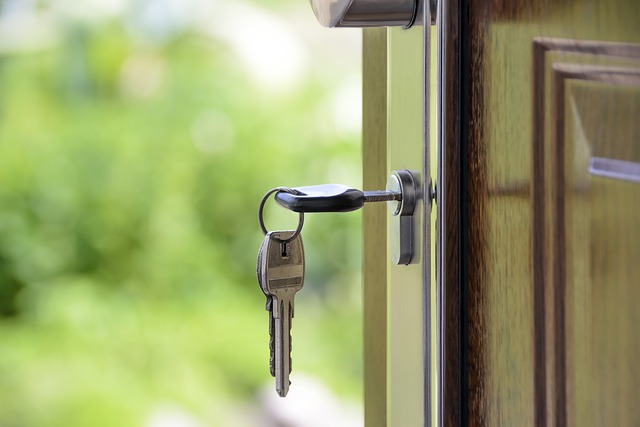
The fundamental principle of supply and demand plays a pivotal role in all real estate transactions and shaping the housing market dynamics. In essence, when the availability of the current supply of houses shrinks or when there’s a surge in demand, leading to a scarcity in housing inventory, the natural consequence is an upward shift in home market value.
An inventory shortage in the real estate realm signifies a situation where potential buyers outnumber available properties on the local market. This imbalance tips the scales in favor of sellers, as they often find themselves fielding multiple offers for their properties. This imbalance is known as a seller’s market, whereas, the opposite would create a buyer’s market.
Adding another layer of complexity to this scenario is the deficit in essential building materials and the skilled workforce needed for new construction. This shortfall not only impedes the production of new homes but also fuels the existing housing shortage. This recent phenomenon of limited real estate availability has catalyzed an increase in home values across many regions. Given the small number of properties up for grabs and robust demand from eager buyers, it’s not uncommon for multiple buyers to find themselves locked in intense bidding contests. Such competitions intensify the buying process and contribute to a rapid escalation in market value. The reverse of this is seen then there are too many homes on the open market, creating a buyer’s market.
3. Size And Usable Space Of The Home
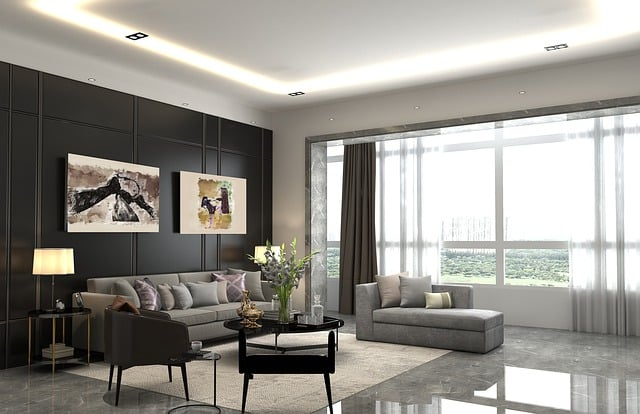
The value of a home often correlates directly with its usable square footage, both for professional appraisers and potential buyers. Typically, “usable space” encompasses the main living areas and, in some regions, areas that are heated. It’s worth noting that finished basements and attics aren’t generally included in this definition.
Yet, these supplementary spaces shouldn’t be underestimated. Expanding your home’s overall square footage, whether through an addition, a completed attic, or a basement, can enhance its property value in various ways. With the rise of remote work, spaces adaptable as home offices have become particularly sought after, making homes with these features especially appealing.
Moreover, the introduction of accessory dwelling units (ADUs) or in-law suites can significantly boost the market value of a property, potentially by up to 38%. The popularity of ADUs has grown in recent times, especially post-pandemic, as more families lean toward multi-generational living in single family homes, accommodating elderly family members or adult children. These units cater to extended family needs and present an opportunity for additional income, making them an attractive feature for potential buyers.
4. Age And Condition Of The Home
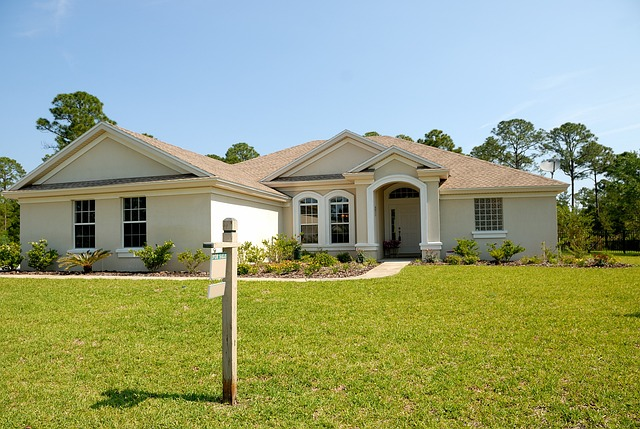
The physical attributes of a home tend to depreciate over time, leading to an observable difference in value between newer and older homes. Appraisers typically evaluate a home’s value based on the scope and severity of repairs it might necessitate. Nonetheless, an older home that has been meticulously maintained, with a solid foundation, reliable structure, and functional systems, can still command a high value.
Prospective buyers often discern the age and quality of a home by scrutinizing the materials and fixtures within it. Key indicators include the type and design of hardware, the quality of tiles, and the presence of energy-efficient features. By ensuring a home is well-maintained from both a structural and aesthetic perspective, homeowners can significantly bolster its appeal and market value. Moreover, in an era increasingly focused on sustainability and energy efficiency, homes equipped with modern, energy-saving features not only stand out in the market but can also offer potential cost savings, further enhancing their attractiveness to discerning buyers.
5. Upgrades And Updates
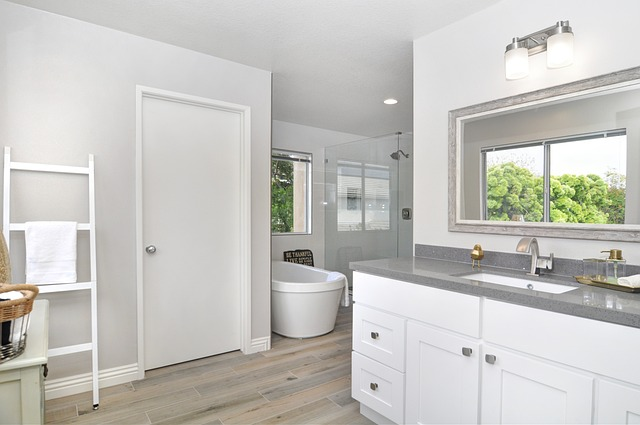
Strategic remodeling can significantly elevate a home’s value and its appeal in the market. It’s not uncommon to observe two homes, similar in age, size, and design, yet one is appraised at a considerably higher value. Often, the difference is attributable to upgrades. Homes that have been modernized, be it through features or layout adjustments, tend to attract a higher number of interested buyers and more lucrative offers.
Several remodeling projects have been recognized for their ability to boost property value while also offering a good return on the initial investment. These include:
Mid-range Landscaping
Investing in vibrant and meticulous landscaping can increase a property’s value by an average of $7,000. Homeowners can anticipate an average return on investment (ROI) of 112% for such projects.
Mid-range Kitchen Remodel
Surveys indicate that a mid-range kitchen remodel can enhance a property’s resale value by an average of $22,000, recovering about 85% of the project’s cost.
Mid-range Appliance Upgrades
According to surveys, introducing new stainless steel appliances can boost a home’s value by an average of $6,000.
System Updates
Enhancing or modernizing older systems not only augments energy efficiency but can also raise the resale value. This includes endeavors like introducing a state-of-the-art HVAC system, addressing roofing issues or complete replacements, incorporating energy-efficient windows, or adding a new garage door.
Fixtures and Paint Revamps
Simple modifications like updating fixtures or applying a fresh coat of paint can rejuvenate a home’s ambiance without necessitating a hefty budget.
In an ever-evolving housing market, staying updated with contemporary trends and ensuring that a home retains its modern appeal is crucial for maximizing resale value.
6. Real Estate Comparables (comparable properties)
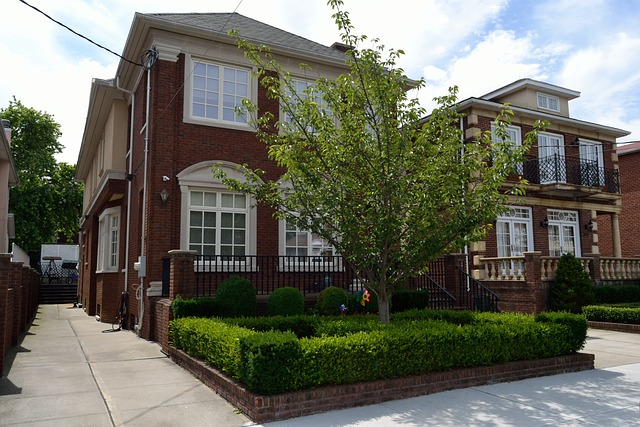
The value of a property often mirrors the selling prices of comparable properties in the same community, commonly referred to as real estate comps. These comparable properties are other homes in the vicinity that share similarities in terms of age, size, materials, features, and overall condition. Both the appraiser and the real estate agent rely heavily on these neighborhood comps either to determine a property’s value or to set a suitable listing price.
When neighborhoods witness multiple bidding wars, it tends to drive home prices above the selling prices of previously sold, similar properties. This dynamic can set a precedent, allowing future sellers to list their homes at even loftier prices. If these bidding wars persist, the possibility of achieving even higher sale prices becomes more likely.
Consider a scenario from a hot seller’s market: A house sells for $368,000. Subsequently, another house with the same floor plan in the same community sells for $385,000. Then, another house of a similar design, situated on a more sought-after side street within the same community, is advised to be listed for $400,000. This progression highlights the influential power of real estate comps. In such a context, if the initial home that sold recently for $368,000 had been listed a few months later, it could have commanded a higher listing and sales price, potentially fetching $390,000 or even more, all due to the influence of a comparative market analysis of the sales price, in comparable homes in the area.
7. Interest Rates
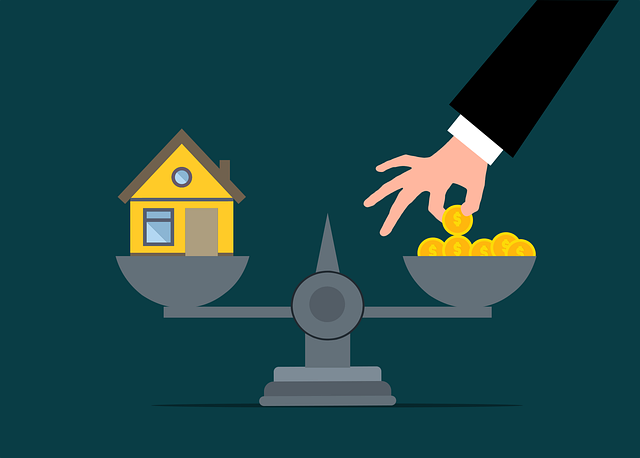
When mortgage interest rates decrease, it often leads to an uptick in home prices. The reasoning is straightforward. Lower interest rates translate to reduced monthly mortgage payments, making home ownership more accessible and affordable. As these rates decline, a fresh wave of potential homebuyers is encouraged to step into the market. They are eager to capitalize on the favorable lending conditions.
But it’s not just first-time buyers who benefit. Existing homeowners, buoyed by the reduced interest rates, might find it economically viable to refinance their current mortgages or even consider purchasing a more spacious or contemporary residence. Some may even choose to venture into an investment property. This added activity from both new and existing home buyers intensifies demand, subsequently driving home value upwards.
On the flip side, when interest rates begin to rise, the cost of borrowing increases. This can temper the enthusiasm of potential buyers, leading to a slowdown in demand. While this doesn’t necessarily result in an immediate drop in home prices, sustained periods of increasing interest rates can apply downward pressure on home value as the pool of potential buyers might shrink. The balance between interest rates and home prices is a testament to the intricate dance of economics, where supply, demand, and external financial factors interplay to shape the market.
8. The State Of The Economy

Economic growth plays a pivotal role in bolstering home value. As the economy prospers and employment rates surge, a larger portion of the population finds themselves in a financial position to invest in property. This optimism, underpinned by a thriving economy, fosters consumer confidence. As a result, a greater number of prospective buyers are motivated to venture into the housing market, amplifying demand and, in turn, driving up property values.
Another factor to consider, is the relationship between economic conditions and property values. This can vary considerably at the local and national levels. While the national economy might be experiencing an uptick, certain local economies may still face challenges due to industry-specific downturns or other regional factors, which could affect local housing markets differently. Conversely, a booming local economy, driven by factors like tech industry growth or a new manufacturing hub, can see rising home values even if the national economy is stagnating.
Furthermore, as property values climb, they act as catalysts for economic stimulation. Enhanced property values enrich homeowners, giving them a heightened sense of financial security and often leading to increased consumer spending. With a buoyant economy, these homeowners also possess a higher disposable income, allowing them to channel funds into maintaining their homes, making updates, or undertaking ambitious upgrades. Such investments enhance individual property values and elevate the appeal of entire neighborhoods, creating a positive feedback loop that further boosts the broader economy.
9. Politics

Political decisions and the state of the economy are deeply intertwined, with government actions. They frequently have a pronounced impact on market dynamics. Whether these actions are taken with the explicit aim of influencing the economy or not, they can have unintended economic consequences. At times, they can significantly sway property values. Some other factors to consider in the ways politics and government decisions affect the real estate market include:
Policy Initiatives
Legislations specifically designed to stimulate the real estate sector can directly influence property values. For instance, the government might introduce policies that lower interest rates, making mortgages more accessible and affordable to a broader segment of the population. Similarly, tax incentives or credits aimed at first-time homebuyers can ignite demand, leading to a surge in property prices.
Stability and Governance
The broader political environment in a country can shape consumer perceptions and financial decisions. If the political landscape is perceived as stable and the local government efficient and trustworthy, it can bolster consumer confidence. This might encourage more people to invest in property, thereby pushing up market values.
Electoral Cycles
Real estate markets can exhibit cyclical patterns aligned with major political events. For example, during presidential or significant national election years, potential homebuyers might adopt a “wait and see” approach. They may be apprehensive about making substantial financial commitments amidst political uncertainties. This can cause a temporary slowdown in the housing market. However, once the elections conclude and a clearer picture of the country’s political future emerges, the housing market often rebounds. Home sales and property values may not only recover but can even surpass levels observed before the election. This is especially true if the post-election environment fosters economic optimism.
Infrastructure and Development Projects
Political decisions on major infrastructure projects, such as the development of highways, public transit systems, or parks, can also influence property values. Areas that stand to benefit directly from these projects, due to enhanced accessibility or improved amenities, often see a rise in demand and, subsequently, in property values.
10. Zoning Regulations and the Real Estate Market

Zoning, established by local municipalities, dictates the specific uses for land areas, such as residential, commercial, or industrial. This classification can be more granular, with residential zones categorized as low-, medium-, or high-density.
Other factors to consider regarding the impact of zoning and building codes on property values are:
Function & Value
A property’s permitted use can greatly influence its value as dictated by its zoning. For instance, commercial-zoned land in a thriving area may be more valuable than a similarly sized residential plot.
Protecting Property Value
By segregating incompatible land uses, zoning ensures that something like an industrial facility won’t disrupt a residential area, thereby preserving or even enhancing property values.
Adapting to Change
As cities grow and need to shift, zoning laws might be adjusted. Upzoning, where zoning laws are relaxed to allow denser development, can be one such response.
Effects of Upzoning
While upzoning can increase property values due to higher development potential, it also raises concerns about traffic, strain on resources and public transportation, and changing neighborhood dynamics.
11. Disasters Zones and Market Value
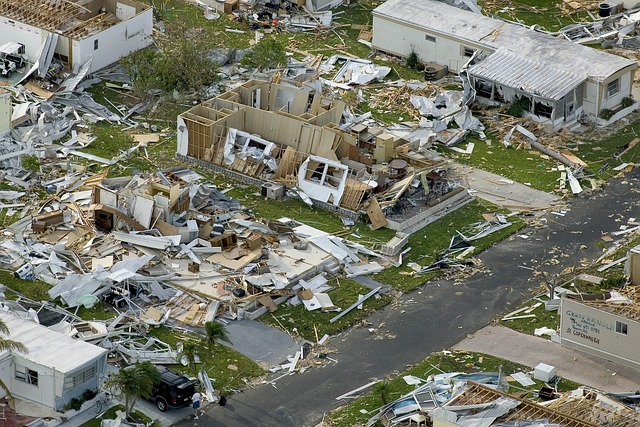
When regions are hit by natural or man-made disasters, an unexpected ripple effect is often observed in the real estate market. Other properties that remain untouched by the calamity can see an uptick in value due to the sudden scarcity of available existing homes and surge in demand from those affected looking for a new residence. Notably, adjacent communities that weren’t directly impacted often witness a significant increase in property values.
At first glance, one might expect the opposite to occur, thinking that proximity to a disaster zone might deter potential buyers. However, many residents who are familiar with regional risks, such as hurricanes or earthquakes, are often willing to shoulder the costs of higher insurance premiums to stay within a familiar area, valuing the familiarity and sense of community.
In response to these disasters, communities frequently undertake infrastructure and developmental initiatives. For instance, after severe flooding, a town might invest in higher sea walls or better drainage systems. Furthermore, post-disaster, many homeowners take the initiative to enhance their homes. Hence, these homes tend to be more resilient to future events and therefore more appealing to potential buyers. Such improvements can further drive up the overall value of homes in the area.
12. Generational Shifts

In recent years, evolving trends in the housing market reveal shifting demographics and preferences of homebuyers. Data underscores this evolution, indicating that millennials, while once dominating the home-buying landscape, are witnessing a contraction in their market share.
Silent Generation (Born 1925-1945)
Currently represent a modest segment, about 6% of homebuyers.
The driving factors for purchases within this generation show that most buyers tend to be downsizing from their existing home or seeking proximity to family or essential services. Typically, they possess the highest equity given their extensive history in the property market.
Baby Boomers (Born 1946-1964)
Representing approximately 32% of the homebuyer market. The patterns suggest a mixture of downsizing due to retirement, with some relocating to areas more suitable for retirement, whether that’s near family or in sunnier locales.
Generation X (Born 1965-1980)
Holding steady at around 25% of the market share. Their focus remains on moving up – upgrading homes to accommodate growing families or improved lifestyle needs. Location preferences often revolve around school districts, job proximity, and community amenities.
Millennials/Gen Y (Born 1981-1996)
Once the dominant force, they now constitute a significant portion at about 28% of homebuyers. This is a noticeable drop from previous years. Their priorities remain diverse, but many buyers seek affordable housing options, environmentally friendly homes, and proximity to employment hubs and social centers.
Gen Z (Born 1997 and later)
The newest entrants to the market, they make up a burgeoning 9%.
As digital natives, their inclination toward technologically advanced homes is notable. Early indications also suggest a lean towards urban settings, but with a keen eye on sustainability and communal amenities.
Such data points toward broader shifts in the market and potential changes in priorities or challenges faced by this generation. A few key preferences have become apparent as millennials search for their ideal homes. They exhibit a keen inclination towards locations that offer convenience to their workplaces, suggesting that the daily commute remains a vital consideration. The quality of a neighborhood – its safety, amenities, and community feel – also stands out as a pivotal factor in their decision-making process. Additionally, with rising property prices and economic uncertainties, affordability has risen to the fore, indicating millennials are seeking value for money and homes that fit within their financial boundaries.
It’s worth noting that as the market continues to evolve, keeping an eye on the changing preferences and trends among different age groups can provide valuable insights for sellers, developers, mortgage lenders, real estate agents, and investors.
Summary
Real estate values are influenced by a vast array of elements, spanning from the introduction of community amenities to shifts in the demographic preferences of homebuyers. All of these elements must be considered by real estate agents. The interplay between factors such as community enhancements, economic trends, and generational buying habits crafts a dynamic real estate landscape. However, the impact of these elements on property values is deeply rooted in the nuances of timing and location. As the property market continues to evolve, understanding fundamentals that affect home value becomes vital for the real estate agent, the homeowner and the potential buyer alike.

